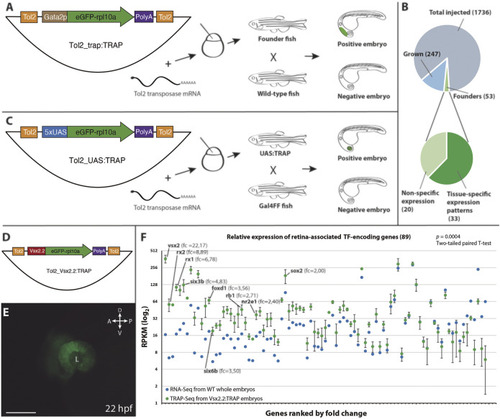|
eGFP-rpl10a expression patterns: (A,A′): TT1, hindbrain and spinal chord (lateral and dorsal, respectively); (B,B′): TT5, jaw, brachial arches and pectoral fin buds (lateral and ventral, respectively); (C): TT6, skeletal muscles (lateral); (D): TT7, central nervous system (lateral); (E): TT15, lateral line system (lateral); (F, F′): TT21, rhombomere 5 (lateral and dorsal, respectively); (G,G′): TT28, hindbrain and pectoral fin buds (lateral and dorsal, respectively); (H,H′): TT37, retina (lateral and ventral, respectively); (I,I′): TT42, midbrain stripe (lateral and dorsal, respectively); (J): TT50, spinal cord and pronephros (lateral). ba, branchial arches; cns, central nervous system; dpn, distal pronephros; e, eye; hb, hindbrain; l, lens; llp, lateral line primordium; mbs, midbrain stripe; nr, neural retina; ov, otic vesicle; pfb, pectoral fin buds; rb5, rhombomere 5; sc, spinal cord, sm, skeletal muscles; y, yolk. Scale bar, 100 µm.
|




